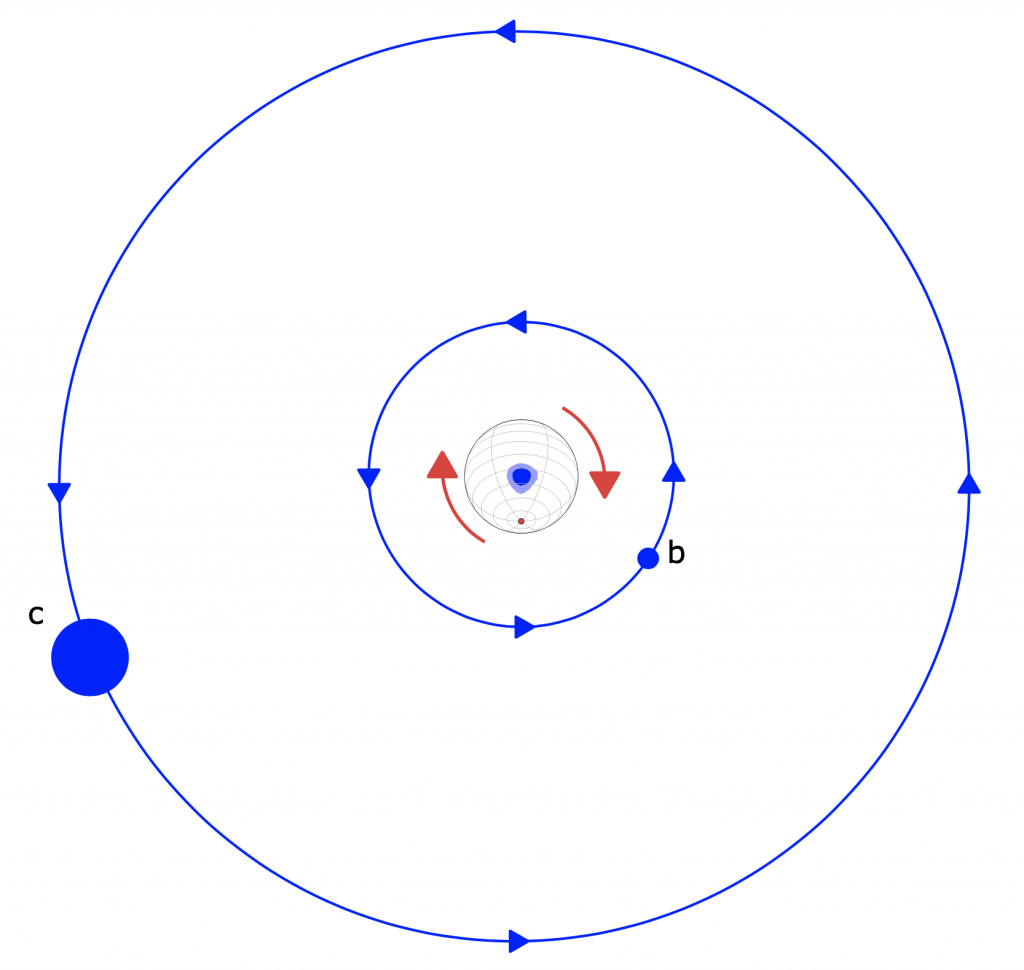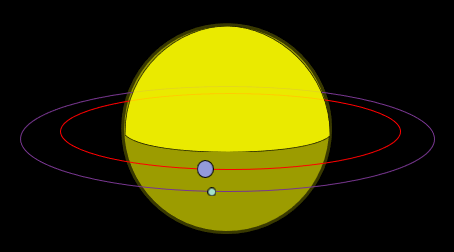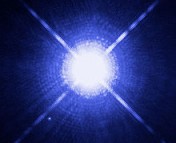Title: A backward-spinning star with two coplanar planets
Authors: Maria Hjorth, Simon Albrecht, Teruyuki Hirano, Joshua N. Winn, Rebekah I. Dawson, J. J. Zanazzi, Emil Knudstrup, & Bun’ei Sato
First author’s institution: Stellar Astrophysics Centre, Department of Physics and Astronomy, Aarhus University, Denmark
Status: Open access on arXiv, published in Proceedings of the National Academy of Sciences
At the time of writing this Bite, we’ve discovered over 4,000 exoplanetary systems! As we discover more and more exoplanetary systems, we are beginning to get a sense of systems’ typical characteristics, such as where different types of planets generally lie. One of these characteristics is that, in general, planets will form roughly parallel to the equator of their star and all orbit in the same direction. This is true in our own Solar System, where the planets are roughly co-planar with each other and with the Sun’s equator, and the planets all orbit the Sun counterclockwise ( when viewed from the top down). However, in some systems – especially those containing hot Jupiters – the protoplanetary disk (PPD) can be disrupted and become misaligned with the rotation of the star. In some cases, this misalignment is due to the planets within the PPD scattering each other or disrupting the gas in the disk, but in others, it is thought to be caused by gravitational interactions from nearby stars. Today’s authors investigate one such case in the system K2-290 A, an F star with two known exoplanets and two M dwarf companion stars.
A Planet is Born
To understand the results of the paper, it is important that we have a general sketch of planetary formation. Stars and their planets are born from spinning clouds of gas in space. As the gas spins, angular momentum causes it to flatten out into a disk shape, and the whole disk rotates in a single direction. Assuming no outside force disrupts the disk, this mutual angular momentum means that the star and planets will all rotate in the same plane parallel to the star’s equator, and orbit in the same direction as the star rotates (clockwise or counterclockwise). In the K2-290 A system however, the planets are co-planar with each other, but NOT with the star’s equator! In fact, the authors find K2-290 A is titled by roughly 124° with respect to its planets! Additionally, the planets’ orbits are retrograde: they orbit in the opposite direction of the star’s rotation.

Sometimes neighbors are the worst…
How do the authors think this star’s rotation got so misaligned from its planets’ orbits? Interactions from other planets seem unlikely, since there is no evidence for K2-290 A having another giant planet at a wide orbit. So, the authors suggest that the strange characteristics arise from interactions with one of its companions, K2-290 B. They run a model of K2-290 A and K2-290 B’s gravitational resonances (i.e., their gravitational influences on each other), and find that when they inject the two planets into the model and evolve the system, large misalignments of K2-290 A and its PPD occur when they are in secular resonance with K2-290 B. That is, when their periapsis or apoapsis align (see Figure 2). The more often these resonances occur, the more misaligned with its planets K2-290 A becomes. This suggests that gravitational interactions between the two are indeed a plausible explanation for the strange geometry of the K2-290 system.

If more observations of this type of misaligned system can be made, it could have interesting implications for planetary formation, since the general assumption is that systems will be aligned. Since some stars lose their stellar companions during evolution, misalignments in single-star systems could be explained by this theory as well! However, it cannot currently be said that interactions with stellar companions are the main mechanism behind misalignments. As the authors say, “there may be more than one way to misalign a disk.”
(Note: the original article contains supplementary material that can be found here)
This Astrobite was edited by Huei Sears.
Featured Image by Christoffer Groenne.




